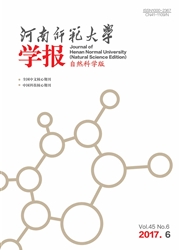

 中文摘要:
中文摘要:
Ca^2+释放激活Ca^2+(CRAC)通道是位于非兴奋性细胞质膜上的慢Ca^2+通道,是非兴奋性细胞(尤其T淋巴细胞和HEK 293细胞)中胞外Ca^2+进入细胞内的主要途径.Ca^2+内流是T淋巴细胞激活的最重要的生理生化特征之一.Orai1蛋白单体是组成CRAC通道的亚基,4个Orai1蛋白亚基构成一个四聚体CRAC通道.内质网Ca^2+浓度的降低使得STIM1发生定向运动并产生聚集,从而激活了CRAC通道.STIM1蛋白把内质网Ca^2+的损耗与CRAC通道上的Ca^2+内流联系起来,行使了Ca^2+浓度感受器的功能.
 英文摘要:
英文摘要:
Calcium-release-activated calcium (CRAC) channel is a slow Ca^2+ channel, which locates in the plasma membrane in non-excitable cells. CRAC channel is the major Ca^2+ entry pathway in non-excitable cells, especially in T lymphocytes and HEK 293 ceils. Ca^2+ influx is one of the most important physiological-biochemical characteristics of T lymphocytes cell. Orail is the subunit of CRAC channel, and four Orail monomers constitute one tetrameric CRAC channel. STIM1 functions as the missing link hetween endoplasmic reticulum Ca^2+ depletion and CRAC influx. At present, STIM1 has been widely accepted as a Ca^2+ sensor that relays the store depletion information to plasma membrane and thus to activate CRAC channel.
 同期刊论文项目
同期刊论文项目
 同项目期刊论文
同项目期刊论文
 Kinetic mechanism of DNA unwinding by the BLM helicase core and molecular basis for its low processi
Kinetic mechanism of DNA unwinding by the BLM helicase core and molecular basis for its low processi Partition function loop series for a general graphical model: free-energy corrections and message-pa
Partition function loop series for a general graphical model: free-energy corrections and message-pa Investigation on Energetic Optimization Problems of Stochastic Thermodynamics with Iterative Dynamic
Investigation on Energetic Optimization Problems of Stochastic Thermodynamics with Iterative Dynamic Brownian dynamics simulation of the cross-talking effect among modified histones on conformations of
Brownian dynamics simulation of the cross-talking effect among modified histones on conformations of Linear response theory and transient fluctuation relations for diffusion processes: a backward point
Linear response theory and transient fluctuation relations for diffusion processes: a backward point Elastic response and length change of single DNA molecules induced by a combination of cisplatin and
Elastic response and length change of single DNA molecules induced by a combination of cisplatin and Approaching the ground states of the random maximum two-satisfiability problem by a greedy single-sp
Approaching the ground states of the random maximum two-satisfiability problem by a greedy single-sp From Chemical Langevin Equations to Fokker-Planck Equation: Application of Hodge Decomposition and K
From Chemical Langevin Equations to Fokker-Planck Equation: Application of Hodge Decomposition and K Study of axial strain-induced torsion of single-wall carbon nanotubes using the 2D continuum anharmo
Study of axial strain-induced torsion of single-wall carbon nanotubes using the 2D continuum anharmo Cytoplasmic Ca2+ Dynamics under the Interplay between the Different IP3R Gating Models and the Plasm
Cytoplasmic Ca2+ Dynamics under the Interplay between the Different IP3R Gating Models and the Plasm Multimeric BLM is dissociated upon ATP hydrolysis and functions as monomers in resolving DNA structu
Multimeric BLM is dissociated upon ATP hydrolysis and functions as monomers in resolving DNA structu Spontaneous Polygonization of Multiwalled Carbon Nanotubes: Perturbation Analysis (vol 51, 065101, 2
Spontaneous Polygonization of Multiwalled Carbon Nanotubes: Perturbation Analysis (vol 51, 065101, 2 Effects of Paclitaxel on EGFR Endocytic Trafficking Revealed Using Quantum Dot Tracking in Single Ce
Effects of Paclitaxel on EGFR Endocytic Trafficking Revealed Using Quantum Dot Tracking in Single Ce Region Graph Partition Function Expansion and Approximate Free Energy Landscapes: Theory and Some Nu
Region Graph Partition Function Expansion and Approximate Free Energy Landscapes: Theory and Some Nu The zinc-binding motif of human RECQ5 beta suppresses the intrinsic strand-annealing activity of its
The zinc-binding motif of human RECQ5 beta suppresses the intrinsic strand-annealing activity of its 期刊信息
期刊信息
